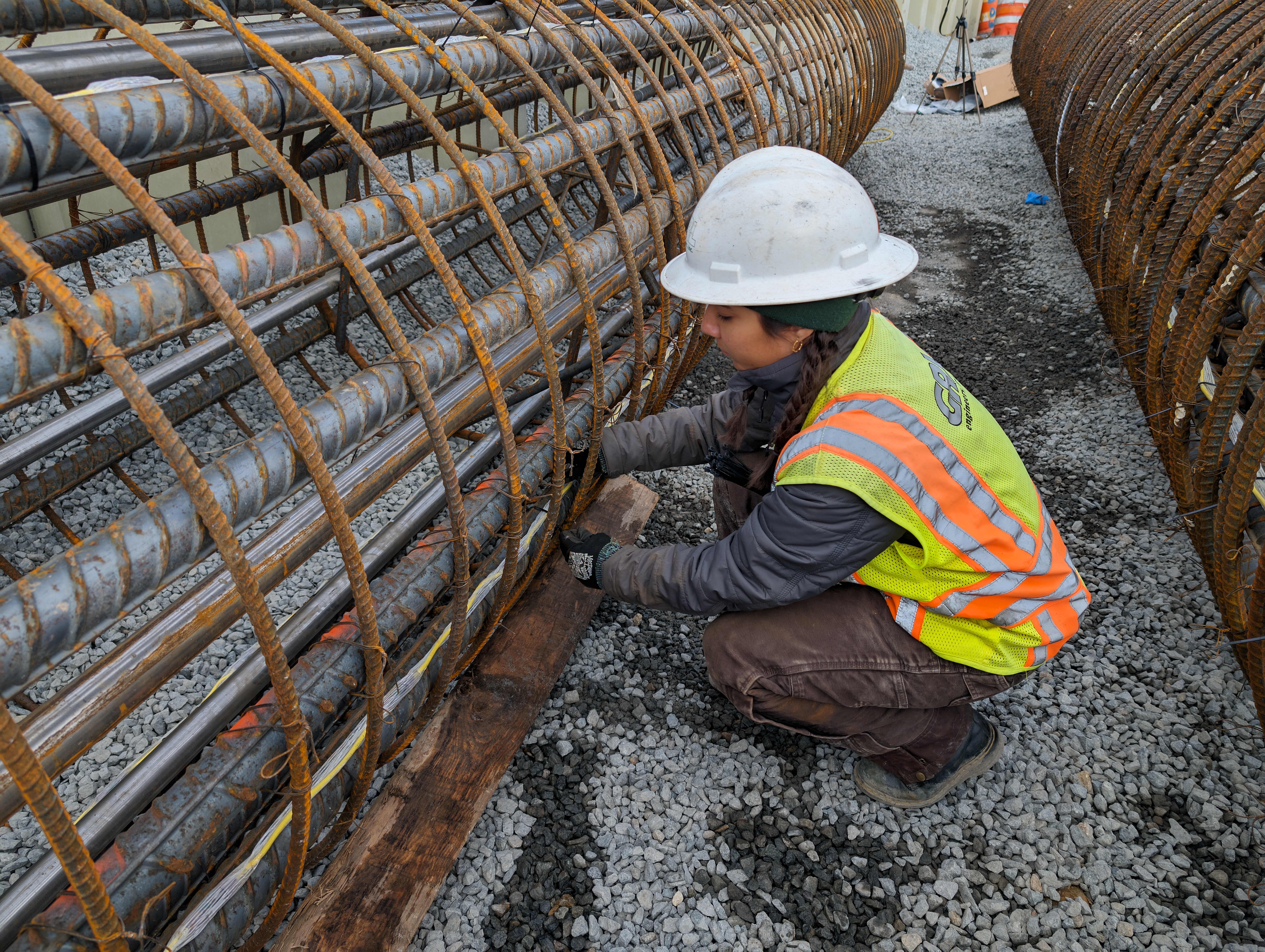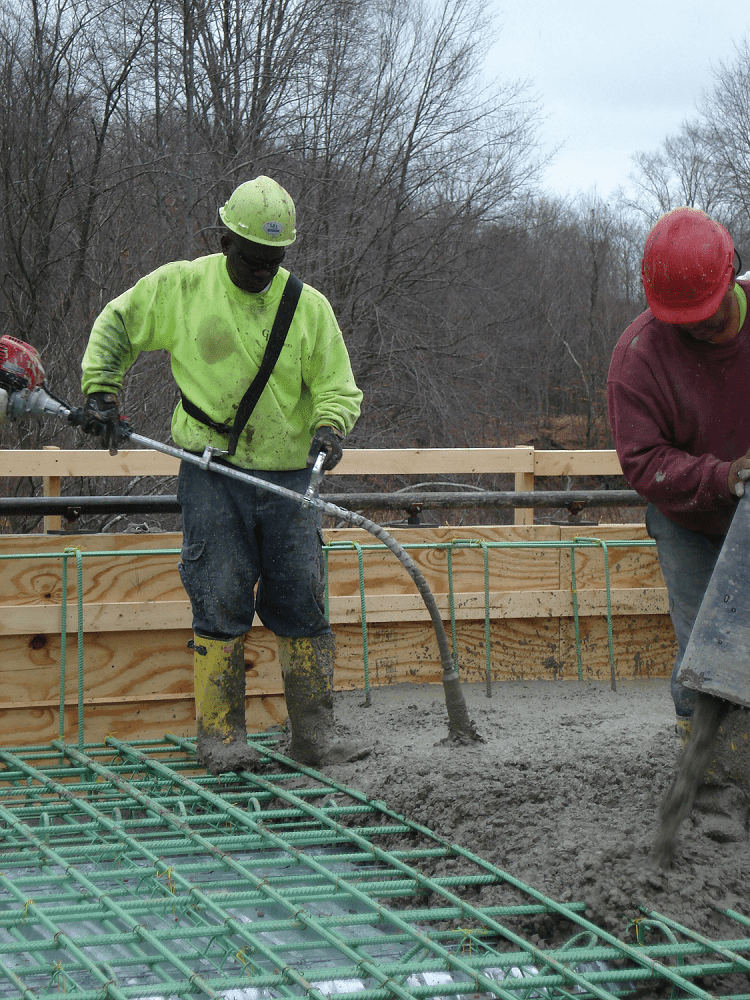The Important Duty of Concrete Foundation in Structural Integrity and Longevity
When it concerns building a residential or commercial property, the structure is much more crucial than you may believe. Concrete structures offer unequaled strength and durability, ensuring your structure can endure various ecological obstacles. Without a strong base, you take the chance of potential issues like shifting or breaking, which can endanger safety and security and worth. Comprehending the nuances of concrete foundations could be the key to preserving your investment for years ahead. So, what should you consider next?
Understanding the Importance of Concrete Foundations
Concrete foundations are crucial to the general security of any kind of structure, as they provide the necessary assistance required to withstand different loads and ecological conditions. When you think about constructing a home or an industrial room, the structure is the very first thing you need to think about. It serves as a barrier versus moisture, shielding your residential or commercial property from water damage. A well-placed concrete foundation also protects against settling and moving, which can cause splits in walls and floorings. You'll intend to guarantee that the structure is correctly created and reinforced, as this impacts the longevity of your building. Additionally, a solid structure can enhance power effectiveness by lowering air leaks. Bear in mind, overlooking the value of a concrete foundation can result in costly repairs down the line. Spending in a top quality foundation upfront is essential for the honesty and resilience of your structure.
Benefits of Concrete Structures for Architectural Honesty
While many variables add to a structure's structural integrity, concrete structures supply unparalleled resilience and stamina. You'll appreciate that concrete can withstand extreme climate condition, resisting both moisture and temperature level fluctuations. This resilience indicates your structure is much less most likely to experience breaking or shifting in time, which can endanger its safety.Additionally, concrete's inherent weight offers a solid base, protecting against motion throughout all-natural occasions like earthquakes or floodings. When you pick a concrete structure, you're additionally selecting low upkeep; unlike wood, it will not rot or draw in bugs, conserving you time and money in repairs.Moreover, concrete's fire resistance supplies included safety, guaranteeing your structure can sustain heats without substantial damage. Overall, investing in a concrete foundation suggests you're prioritizing the long-lasting stability and integrity of your structure, making it a wise choice for any building and construction task.
Typical Sorts Of Concrete Foundations
When it pertains to building structures, comprehending the usual types of concrete foundations can assist you make notified selections for your project. The most common kinds include slab-on-grade, crawl room, and complete basement foundations.A slab-on-grade foundation is a straightforward, cost-efficient option, where a thick concrete piece is put directly on the ground. This type functions well in warm climates, as it decreases warm loss.Crawl room foundations elevate the home somewhat over ground, permitting air flow and accessibility to pipes and electrical systems. This style can aid protect against wetness issues.Full basement foundations provide added living or storage room while providing excellent structural support. They call for even more excavation and are typically utilized in colder climates to prevent frost heave.
Aspects to Consider When Designing a Concrete Structure

Finest Practices for Installing Concrete Foundations
When you're mounting a concrete structure, appropriate site preparation is important to assure stability (Concrete Contractors Rancho Cucamonga). You'll additionally require to recognize support techniques to boost toughness and sturdiness. Don't neglect the curing process, as it plays an essential function in achieving a strong foundation.
Website Preparation Relevance
It may appear simple, correct site preparation is important for ensuring a strong and durable concrete foundation. Beginning by clearing the area of any type of debris, vegetation, or organic material that might compromise the structure's honesty. Next off, analyze the dirt type and compaction; you could require to dig deep into or add products to produce a steady base. Degree the ground to assure even weight distribution and avoid settling problems in the future. Mounting appropriate water drainage systems is likewise essential to avoid water buildup, which can deteriorate the structure gradually. Lastly, define the foundation's measurements precisely to guide the putting procedure. By complying with these actions, you'll set the stage for an effective concrete foundation that stands the examination of time.
Reinforcement Methods Explained
Once the website is properly prepared, the following action in guaranteeing a tough concrete structure entails carrying out reliable reinforcement methods. You must start by utilizing steel rebar, which offers tensile toughness and aids protect against cracking. Lay the rebar in a grid pattern, making certain it's raised making use of spacers to maintain correct protection. In addition, take into consideration utilizing cable mesh for extra support, particularly in locations subject to heavy lots. Do not fail to remember to tie the rebar crossways firmly with cord. For larger foundations, fiber reinforcement can improve resilience, reducing the danger of contraction fractures. Always comply with local building regulations and guidelines to make sure conformity. By applying these support strategies, you'll greatly boost your foundation's strength and longevity, laying a strong foundation for your framework.
Treating Process Fundamentals
To guarantee your concrete foundation cures properly, it is necessary to keep ample dampness and temperature level problems right away after pouring. Start by covering the surface area with a damp burlap or plastic sheeting to retain dampness. This maintains the concrete hydrated, stopping cracks and ensuring strength. You should additionally monitor the temperature; suitable treating conditions are between 50 ° F and 90 ° F. If it's as well hot, haze the surface area regularly to prevent quick evaporation. For cold weather, take into consideration making use of protecting blankets to keep warmth. Aim for a healing period of a minimum of seven days, as this is vital for ideal stamina development. By following these ideal practices, you'll boost your foundation's durability and durability, making sure structural integrity for several years to find.
Maintenance of Concrete Structures for Durability
To keep your concrete structure strong and long-term, routine inspections are crucial. You must also assure efficient drainage options are in area to avoid water damage. If you identify any cracks, addressing them without delay will save you from larger problems down the line.

Regular Evaluations and Evaluations
While routine assessments and precast slab analyses could appear like a job, they're essential for maintaining the integrity of your concrete structure. By consistently looking for fractures, shifts, or signs of wear, you can capture prospective problems before they intensify into pricey repair services. Search for any water merging around the foundation or uncommon settling, as these can indicate he said underlying issues. It's also a good idea to monitor any kind of adjustments in your house's structure, like doors that stick or home windows that don't open efficiently. Keeping a record of your examinations aids track modifications in time, allowing for aggressive upkeep. Eventually, these assessments ensure your foundation stays steady, supporting the long life and safety and security of your entire structure. Do not neglect this critical element of homeownership!
Effective Drain Solutions
Normal assessments can reveal concerns like drainage issues that could compromise your concrete structure's security. To stop water build-up, assure your gutters and downspouts direct water far from the structure. Installing French drains can successfully reroute surface and groundwater, minimizing stress on your foundation walls. Furthermore, rating the dirt around your home helps guarantee that water flows away, instead of merging near your foundation.Consider using sump pumps in areas susceptible to flooding, as they proactively get rid of excess water. Frequently inspect for obstructions in water drainage systems and clear them quickly. You'll safeguard your structure's honesty and long life by taking these aggressive measures. Remember, effective drain options are necessary for keeping a solid, sturdy concrete structure.
Motivate Split Services
When you notice cracks in your concrete foundation, addressing them promptly is essential for maintaining its longevity. Small splits can promptly advance right into bigger problems, jeopardizing the structural honesty of your home. Consistently inspect your foundation for indications of damage, such as horizontal or vertical splits. If you detect any kind of, don't wait-- fix them quickly. You can utilize epoxy shots or concrete patching compounds, which work for securing splits. Constantly adhere to the supplier's directions and consider speaking with an expert for substantial damage. Remember, prompt repairs not go to website only boost your structure's longevity however also save you money in the future by protecting against a lot more comprehensive repair services down the line. Keep proactive, and your structure will remain solid and safe.
Dealing With Typical Issues With Concrete Foundations
Concrete structures can deal with different problems gradually, making it important to identify and address them immediately. One of one of the most common issues is breaking, which can happen as a result of temperature level fluctuations or resolving dirt. If you discover splits, it's necessary to evaluate their dimension and depth; tiny cracks can frequently be sealed, while larger ones might need professional evaluation.Water breach is an additional major concern. Excess dampness can bring about mold growth and structural degeneration. Warranty proper drainage around your structure to reduce this risk. Furthermore, seek indications of changing or bowing walls, as this can show underlying problems with your foundation's stability.Regular evaluations are essential to catch these issues early. If you find any kind of worrying signs, don't think twice to speak with a foundation expert. By staying aggressive, you can maintain the integrity and long life of your concrete structure, guaranteeing your home remains risk-free and protected.
Regularly Asked Concerns
Just How Does Dirt Type Impact Concrete Structure Performance?
Soil kind significantly affects concrete structure performance. If you've got extensive clay, for circumstances, it can cause changing and splitting. Sandy soil might bring about settling. Recognizing your dirt helps assure a secure foundation.
Can Concrete Foundations Be Fixed if Damaged?
Yes, you can fix damaged concrete structures. Depending upon the extent of the damages, methods like epoxy injection or piece jacking can restore security. It's ideal to get in touch with a professional for effective options.
What Is the Regular Life-span of a Concrete Structure?
A concrete foundation usually lasts 30 to 100 years, depending on elements like dirt conditions, environment, and maintenance. You'll intend to keep an eye on it to assure it continues to be healthy throughout its life-span.
Are There Option Products to Concrete for Foundations?
Yes, there are options to concrete for foundations, like steel, timber, or also recycled products. Each option has one-of-a-kind benefits and drawbacks, so you must consider your task's specific needs when choosing the ideal product.
How Does Climate Influence Concrete Structure Sturdiness?
Environment significantly impacts concrete foundation durability (West Coast General Engineering commercial concrete). Extreme temperatures, wetness, and freeze-thaw cycles can deteriorate the product, bring about splits and architectural concerns. You need to take into consideration regional environment problems when planning your structure to guarantee long-term efficiency